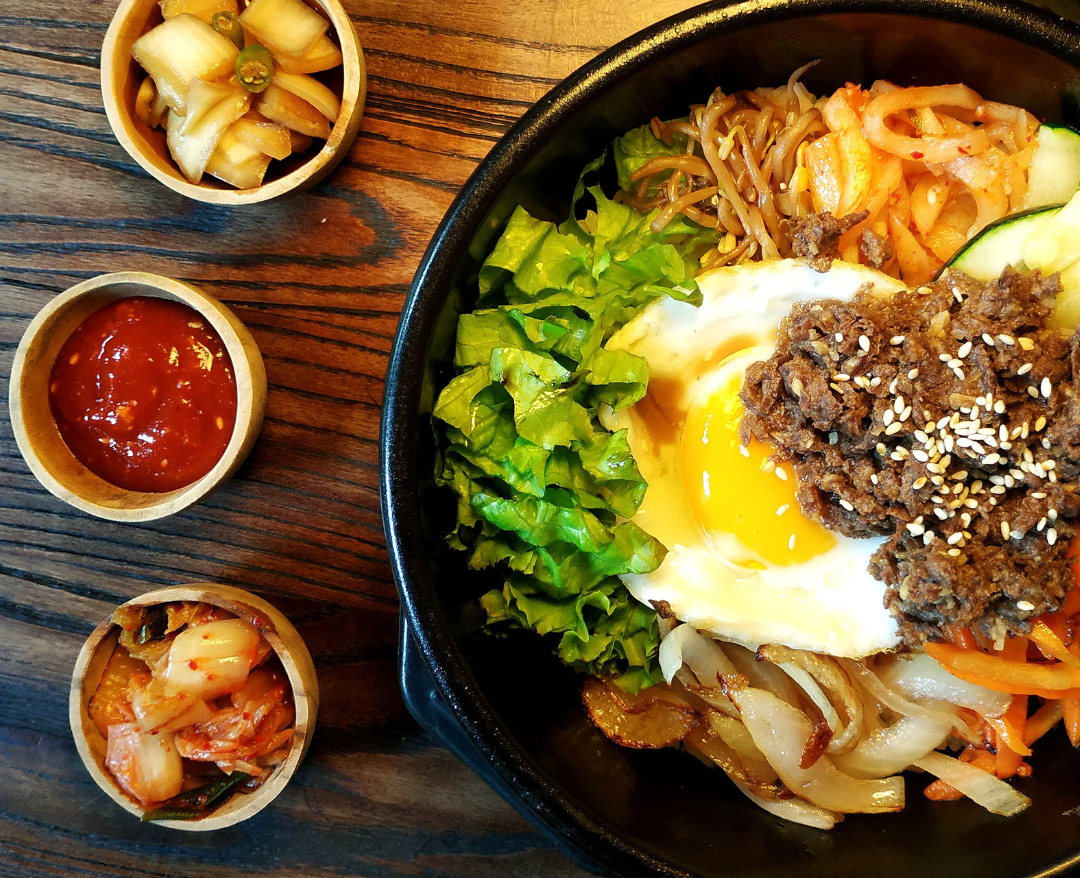Korean cuisine is a compelling melange of flavors and textures known for its bold spices, vibrant colors, and wholesome ingredients. But with so many distinct food groups to navigate, from hearty soups to savory stews to crispy fried delights, where does one begin?
Whether you’re a seasoned foodie looking to expand your culinary horizons or a curious newbie eager to sample the best Korean cuisine, this beginner’s guide has got you covered. Read on as we break down the essential Korean food groups and share tips and tricks for savoring each dish like a pro.
Get ready for an adventure that will tickle your taste buds and leave you hungry for more!
What are Korean food groups?
Korean food groups are a way of categorizing dishes by their ingredients. They include rice, soup, vegetables, protein, and bread.
- Rice: Rice is the most common food group in Korean cuisine. It can be served as a side dish, plain or with additives such as soy sauce or garlic.
- Soup: Soups are a popular way to start a meal in Korea. They can be made from beef, chicken, fish, or vegetable stocks. Some soups also contain noodles or dumplings.
- Vegetables: Vegetables play an important role in Korean cuisine. They can be served as starters or main courses and are often stir-fried with spices.
- Protein: Protein is another essential ingredient in Korean cuisine. It can be found in meat products such as kimchi, bulgogi, tofu, and other vegetarian dishes.
- Bread: Bread is an essential part of Korean cuisine. It can be made from various flours and serve as a side dish or the main course.
What are the five main Korean food groups?
Korean food groups are based on the five basic elements of Korean cuisine: meat, vegetable, starch, sauce, and soup.
The five main Korean food groups are as follows:
- Meat Group: Includes meats such as pork, beef, chicken, and fish. There are also seafood dishes in this group.
- Vegetable Group: Includes bok choy, spinach, mushrooms, and carrots. Vegetables can be served cooked or raw in various forms, such as salads or stir-fries.
- Starch Group: Includes rice, noodles, and other grains such as barley. These dishes can either be boiled or steamed. Some examples of starch dishes include kimchi stew and jjigae (a stew made with octopus).
- Sauce Group: Includes dipping sauces such as soy sauce and gochujang (a red pepper paste). These sauces can enhance the flavor of meals or be added to rice for a more complex flavor profile.
- Soup Group: Includes beef or chicken stock soups with herbs and spices added for flavor. Hashes can also be made with different types of beans to make them more filling.
Korean cuisine is complex and diverse, with many different dishes that can be classified into one of the five food groups.
How do Korean food groups differ from Western food groups?
Korean food groups are based on the principle of balancing yin and yang. Korean cuisine has six primary food groups: rice, kimchi, beef, pork, vegetables, and soup.
Each food group has specific ingredients that should be used in moderation to create a balanced dish. For example, beef is paired with kimchi to make a savory dish, while vegetable dishes are often served with either boiled or steamed rice as a base.
In contrast, Western food groups are based mainly on protein and carbohydrates. These two categories form the foundation of most Western meals. Protein includes meat, poultry, fish, eggs, and dairy products, while carbohydrates include grains such as bread and cereals and fruits and vegetables.
The number of food groups in Western cuisine can vary, but typically there are three main categories: appetizers (such as snacks), main courses (like soups or salads), and desserts.
Which Korean food group is best for you?
There are a few Korean food groups that are considered to be the best for different people. If you’re looking to add some new and exciting flavors to your diet, then you should check out the following three food groups:
- Vegetables: This group includes cucumbers, carrots, and radishes. They’re low in calories and contain a variety of vitamins and minerals.
- Meat: This group includes pork, beef, chicken, and fish. These foods contain protein and other essential nutrients.
- Seafood: This group includes squid, shrimp, and clams. They’re high in seafood content and contain various vitamins and minerals.
Although Korean cuisine can be intimidating, it is straightforward to understand. In this guide, we have outlined the main food groups that are found in Korean dishes and provided a little bit of information about each one. You can start cooking some delicious meals by understanding the basics of Korean food!



